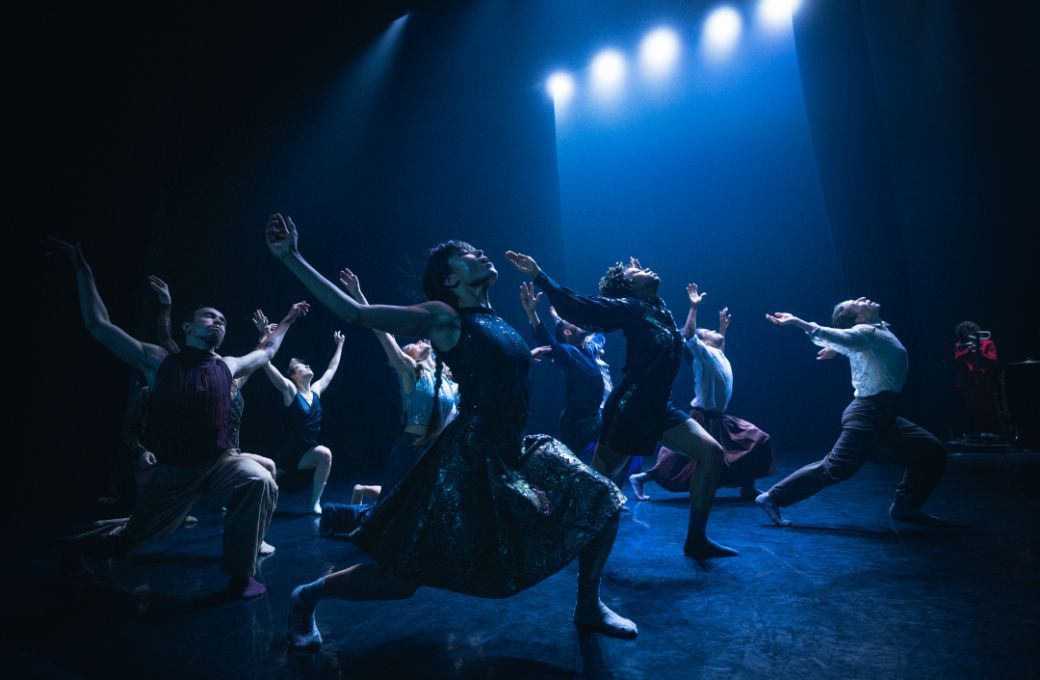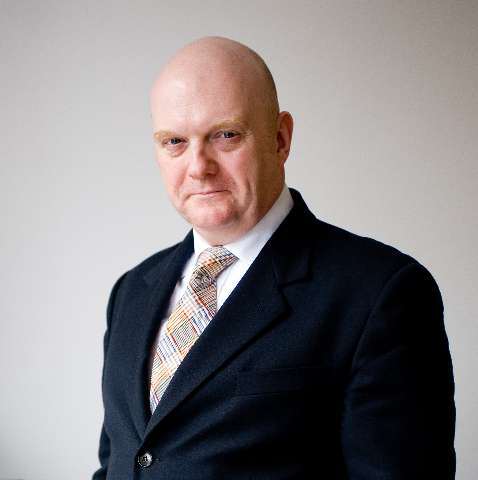Hofesh Shechter's Theatre of Dreams takes a while to get going, although once in full swing the arresting momentum was infectious, and this despite my annoyance at the breached fourth wall when the dancers climbed down from the stage and invited audience members to dance with them to a catchy Latin beat. Thankfully, none of the cast made it to my seat in the First Circle but their exhortations from below caused all the young people in front of me to get up and boogie, the effect of which left me watching their backs for a few minutes. I have yet to find a good case for inviting direct audience participation in dance theatre and this unwelcome episode didn’t break that duck!

I would much rather have spent the full ninety minutes watching these twelve outstanding dancers, moving with silky smooth fluidity even in circumstances that would be too extreme for the physicality of everyday humans. Their unity when dancing in synchronisation seemed always to be in pinpoint perfection, all the more remarkable given the frequent, sudden bursts in and out of uniformity.
Watching these amazing dancers was an uplifting experience but seeing them was more difficult. Tom Visser’s lighting was often so dim that an ambiguous haze blurred my sight for much of the time, the dusky feel occasionally and abruptly punctuated by bursts of full illumination. On a couple of occasions at the beginning and near the end, theatrical conventions were reversed with a darkened stage and the house lights on (a helpful aid to a critic, writing notes). Visser’s frequent changes of hue, from blue wash to bright white light that just picked up the dancers’ bodies in an otherwise black box, was in full accord with the trancelike nature of dreams.
A feeling of dance being deconstructed was ever-present as curtains were regularly drawn across different horizontals on the stage, either obscuring or suddenly revealing varied formations of dancers behind, emphasising the dream thematic by challenging the audience to wonder what was happening unseen behind the curtains, since the dancers were often in mid-movement, or even in a state of undress, when revealed.
At one slightly gruesome point, a dancer who appeared to be the silent observer of events (a human dreamcatcher perhaps?), periodically sitting cross-legged on the stage intently watching his peers, was apparently and realistically cut in half by the red curtain – an illusion perhaps intended to mimic the magician’s ubiquitous stage trick. This same lone dancer had opened the work as if a lost and confused audience member wandering to the front of stage, staring at and then jumping up onto it and crawling under the red curtain. It created that inseparable bond between the watcher and the watched, with what sounded like a cloaked heartbeat accompanying his journey from reality into the world of theatrical fantasy.
A diverse mix of dreams and theatre spun like an intricate web through the work, including the repeated anxiety of suddenly appearing naked in public, and as if to prove that this was all about theatre, the piece ends with a drawn curtain, complete with huge folded Garnier-like tassel, at the back of the stage with the players turned away from the audience, staring at it waiting for their show to open. It would have been a great full-circle device for the “observer” to have crawled in from under it!
After that slow beginning, the work gathered pace and I became thoroughly engrossed in its exhilarating, foot-tapping momentum. The eclectic, pulsating soundtrack of Shechter’s own music was punctuated by two memorable arrangements of Molly Drake’s poignant 1950s song, ‘I Remember’. The lyrics reminiscing a couple’s life together: the original by Drake herself, recorded at their home by her husband, Rodney, but not released for many years after her death; and a recent interpretation by Nell Catchpole, who co-composed Shechter’s Untouchable for The Royal Ballet. Three musicians, dressed in red, appeared periodically onstage – also often shifting their positions between curtain pulls – to provide uplifting live musical interruptions to the pulsating electronic score.
In this absorbing piece of dance theatre, Shechter and his creative team have provided an episodic deep dive into the realms of human subconscious, through this hazy, fragmentary and cinematic representation of the stuff that dreams are made of.


